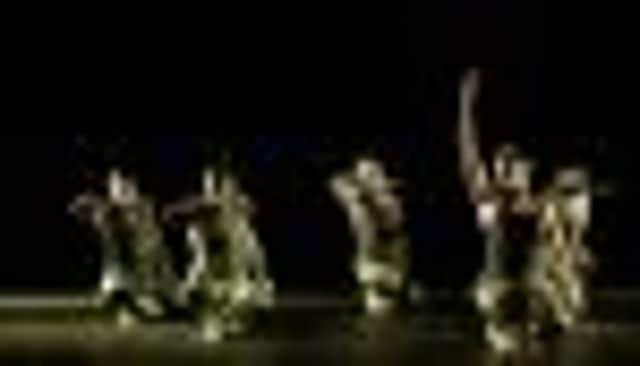Interview: Aditi Mangaldas, choreographer


Ten years ago, the Edinburgh International Festival (EIF) shone a spotlight on Indian Classical Dance. Six of the eight styles were represented, and despite their differences, they all had one thing in common – tradition.
A decade later, and the EIF has dared to do things a little bit differently. Once again an Indian dance company has been invited to perform, only this time, it’s one that is re-inventing the art form and pushing boundaries. For the past 20 years, the New Delhi-based choreographer has been simultaneously respecting the traditions of Kathak, and taking them into the future.
Advertisement
Hide AdAdvertisement
Hide AdFor Mangaldas, the chance to be seen on a world stage, alongside other EIF dance companies from Australia, Brazil, France, Russia and the US, is very special.
“Indian dance has been performed a lot abroad,” she says, “but it’s mostly in India-centric or Asia-centric festivals. It’s seen as a dance style where the dancers dress up beautifully, with all the eye movements and gestures, and it’s alright if you don’t understand it. It’s put into a compartment and forgotten – that’s the feeling I often get.
“So to be part of this festival, with an international group of people, where it has nothing to do with India or any particular area or country, it’s just really good dance – that’s very interesting and exciting for us.”
Like Akram Khan on these shores, Mangaldas takes the rhythmic style of Kathak and adds in a contemporary twist. Dating back to the 3rd century, traditional Kathak is usually performed as a demonstration – an explanation is given, followed by the steps themselves. It’s a strategy that allows solo performers to show off their amazing technique, but for Mangaldas, “somehow the magic is lost”.
The double bill she is bringing to Edinburgh, therefore, takes a very different approach. Ensemble works for eight and nine dancers respectively, Uncharted Seas and Timeless both allow the audience to make up their own minds as to the work’s intent. Needless to say, Mangaldas is not without her naysayers back home.
“In India there are a huge amount of people who follow Kathak – and of course there are classicists who believe we shouldn’t look at it with a contemporary mind, for fear of losing our roots,” she says. “But I don’t agree, I believe there is a place for everything, and that even the classical tradition has to constantly rejuvenate itself.
“I like working within the classical repertoire and enlarging it, and over the years there has been a growing audience in India for contemporary work, so I see a very positive outlook.”
Advertisement
Hide AdAdvertisement
Hide AdThat said, of the two pieces Mangaldas’ company will perform, Uncharted Seas, retains classical elements, in terms of costume, music and presentation. Unlike the demonstration style, however, she doesn’t tell us what to think.
“Although it’s in the classical format, I have left a lot of open-ended avenues,” she explains. “So rather than holding people by the hand, and taking them down the path I want to go down, instead there are many, many ways the audience can proceed.” According to Mangaldas, Uncharted Seas is inspired by the idea of searching, and the fact that we are all looking for something – be it love, freedom, the meaning of life. Mangaldas poses the questions, it’s our job to come up with our own individual answers.
Timeless, on the other hand, shows Mangaldas and company at its most modern. With costume and lighting design by the same people who work with Akram Khan, the piece will show how Mangaldas is bringing Kathak into the 21st century. All of the dancers have trained in Indian dance for many years (Mangaldas herself started at the age of five) but have since supplemented their style with intensive training in yoga and the Indian martial arts style, Kalaripayattu.
Costume and staging aside, this blend of techniques underpins the company’s contemporary style. “By training our bodies in this way, we have been able to re-look at similar movements from a different energy perspective,” explains Mangaldas. “And it is this shift in energy that brings about a new dance vocabulary.
“It’s a long process, because we’re working with a very, very old dance style. And I have to be careful not to fall back on to something that is already there, and has been for so many years. I have to constantly ask myself, ‘is this coming from within me?’ That is the key.”